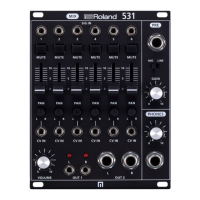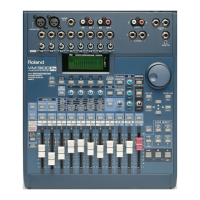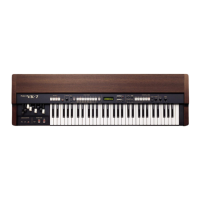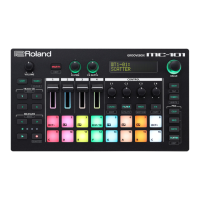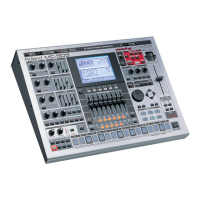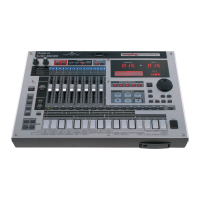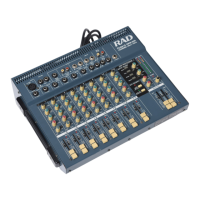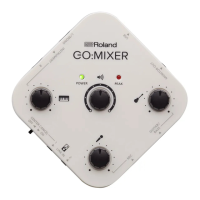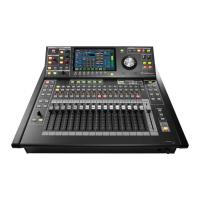Other useful functions
51
1.
Hold down the [SHIFT] button and press pad [10] (ARPEGGIO RATE).
2.
Use the [TEMPO/VALUE] knob to select the arpeggio note length.
Thirty-second-note triplet
If the timing you use when playing each note of the chord is considerably off, the arpeggio might not start playing right away.
Play the notes of the chord at the same time.
However, when you want the arpeggio notes to play smoothly from the top, such as when using the “Up” or “Down” setting, it
may help to play the notes of the chords from the lowest note or the highest note first.
The arpeggio keeps repeating only for as long as you hold down the keyboard pads (this works differently when the hold
function is on).
The envelope (which triggers when the arpeggio plays) changes, depending on the POLY mode settings in the controller
section and the ENV TRG (envelope trigger)(P.20) settings in the ENV section.
Below are some examples of how ENV TRG works, when the POLY mode is set to “Mono”.
When you use the arpeggio when ENV TRG is set to “GATE” and the [SUSTAIN] knob reaches the setting of the decaying sound
(0), the sound stops as the envelope ends.
Using the arpeggiator together with the hold function
When you press the [HOLD] button to make it light up while an arpeggio is playing, the arpeggio keeps playing even after you
take your finger off the keyboard pad.
If you press another keyboard pad in this state to specify a different chord, the arpeggiator plays using the new chord.
Using the arpeggiator together with portamento
When Portamento Mode is “On”: the arpeggiator plays back with portamento applied to the notes.
When Portamento Mode is “AUto”: the arpeggio plays with portamento applied, but only when ENV TRG is set to “GAtE”.
When Portamento Mode is “OFF”: the arpeggiator plays back without applying portamento to the notes.
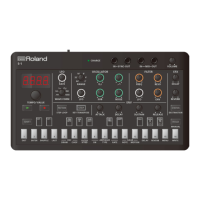
